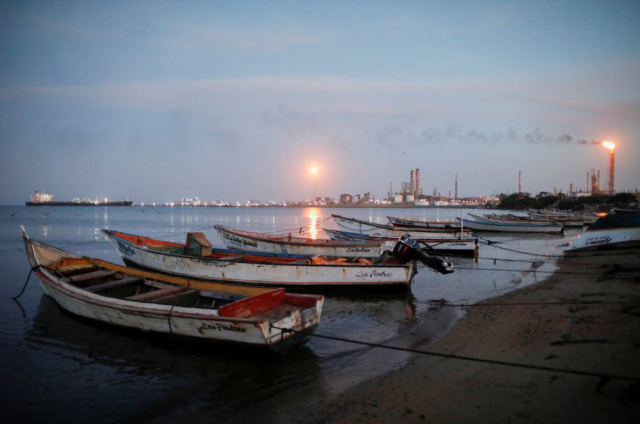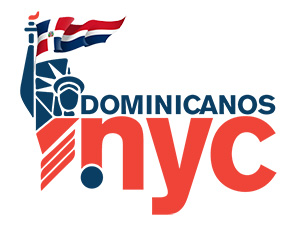
As of the second week of April, residents of El Cayude and Prudencio, on the Paraguaná Peninsula, have seen dead species washing up on the shores of the beaches. They presume this to be the effect of the two gas spills and one crude oil spill from the underwater pipelines that cross the Golfete de Coro to feed the Paraguaná Refining Complex (CRP).
Irene Revilla // Correspondent lapatilla.com
There is great concern among the inhabitants of coastal areas, who have not received any response from PDVSA and can no longer fish. “There’s nothing left. You have to sail and sail to be able to get anything,” said a fisherman who preferred not to identify himself for fear of reprisals and constant threats they receive so that they do not report what is happening in the ‘Golfete de Coro’ (Small Gulf of Coro).
The last few weeks have been of great concern, since the people have seen quite severe gas leaks and this is dangerous, especially at night because if not seen, any boat can get too close and the outboard motors may cause an explosion.
“What we do is we tell ourselves where the leak is so that if possible they do not pass near the place and thus avoid a misfortune. PDVSA is aware, because these leaks are not two days old. There is one that has been there since January and they have not repaired it. This also keeps the fish away, both the smell of the gas and the loud noise,” said another fisherman that lives on the shores near Punta Cardón.
The leaks never stop
PDVSA Occident knows, from information provided by fishermen, the coordinates of the leaks in the pipelines. A group of them even carried out an inspection in the area and warned that the gas leak conditions are quite severe. PDVSA responded that they would manufacture the ‘clamps’, and that once they were ready to install them, they would be notified.
The pipelines have been cracking in several spots in the last four years and the state oil company only shows up after fishermen report the leak. The clamps are manufactured, these clamps wrap around and are placed on the break along with rubber foam to seal the leak. However, once a break is sealed, it breaks on the other spot. “We always see leaks, those pipes are no longer useful, the clamp is put on and after 15 or 20 days there is a new leak in the same line and a few meters down from the previous one,” said a fisherman from Punta Cardón.
The professor and marine biologist, Eduardo Klein, monitors oil and gas spills through satellite images and wrote on his Twitter account: “#11Apr New gas leak in the @PDVSA underwater tube in #Tiguadare This is added to the other one that is in #RioSeco and the one in #Petróleo, both there since January. What do @MinecOficial @JosueLorcaV say? (answer: they don’t say anything).”
“#13April the gas leak continues in the underwater gas pipeline #PDVSA #Tiguadare #Falcon. In that pipe there is another gas leak near #RioSeco that has been there since January while @JosueLorcaV “works tirelessly” elsewhere and without @PDVSA @MinecOficial giving an ear.”
#11Abr Nueva fuga de gas en el tubo submarino @PDVSA en #Tiguadare Esta se suma a la otra que está en #RioSeco y la de #Petróleo, ambas ahí desde enero. ¿Qué dicen @MinecOficial @JosueLorcaV? (respuesta: no dicen nada) pic.twitter.com/BWy7qDpDRX
— diodon histrix (@diodon321) April 11, 2024
#13Abril sigue la fuga de gas en el gasoducto submarino #PDVSA #Tiguadare #Falcon. En ese tubo hay otra fuga de gas cerca de #RioSeco que está ahí desde enero mientras @JosueLorcaV “trabaja incansablemente” en cualquier otro lado y sin que @PDVSA @MinecOficial le paren pic.twitter.com/pIAtXoMRQ4
— diodon histrix (@diodon321) April 14, 2024
Unsuccessful meetings
This information has been confirmed by the inhabitants of the coastal area of Falcón who, although they have protested, the complaints are whittled down in meetings with PDVSA and the Ministry of the Environment. From these meetings, no satisfactory answers or solutions have yet been obtained.
An example of this is that at the beginning of this year a study was announced in the ‘Golfete de Coro’ with the assistance of public institutions such as the Scientific Research Institute (Ivic), but until the publication of this note, the fishermen are unaware of the progress of any study and its results.
“They should involve all of us, we should all know what is happening with the Golfete, which is our main livelihood, it also has great environmental importance for the country, and we don’t know anything about it. We keep seeing the spills and that’s it,” said the fisherman.
A press release published by PDVSA on September 12th, 2020, states that an environmental cleanup was carried out in the Golfete de Coro, although it does not explain the extent of the damage from the crude oil spill. Subsequently, on March 4th, 2024, the National Government announced that they were refining details of the Golfete rescue plan.
Leiva reported that they began a study in the area with a view to drawing up strategies that allow the recovery of this natural space with the help of experts, as well as accompanied by fishermen so that the response is the most expeditious with the application of the necessary scientific knowledge. and ensure that the ecosystem remains healthy and productive.
The regional director of the National Fisheries and Aquaculture Research Center, Luis González, who is in charge of the fisheries and socioeconomic study of the communities settled near Golfete, reported that at the moment they had been working for two months and that it would last a year to complete.
Despite all the work and hassle that generated meetings in various coastal areas, the fishing families do not have information about the study or about the repairs of the pipelines. On the contrary, they continue to see oil spills and gas leaks that keep fishermen “hog-tied.”
Ombudsman hears the case
The representative of the Ombudsman’s Office in the state of Falcón, Edisoie Sandoval, told lapatilla.com this Monday, April 15th, that he held meetings with the Vice Minister of Fisheries and the National Directorate of PDVSA on environmental matters to discuss the issue of the ‘Golfete de Coro’, social contributions to fishermen, and also the environmental study about the damage that the Golfete has suffered.
He explained that the National Government has said that the fishermen have its support to solve this situation, grant credit to improve their conditions and also that evaluations may continue in the area to seek mechanisms to compensate for the damages.
“From the Ombudsman’s Office I have been a mediator and observer, just as the fishermen wanted to carry out the plan for the Golfete issue. The commissions continue working and the Ministry of Fisheries continues to do everything possible to improve.”
He explained that on April 22nd there will be a new visit by the ministry to these communities to review the actions that have been implemented.
Regarding the compensation that the Falcón fishermen have requested, he said that there is a willingness to give it, but that will be determined by the damage that the study shows and it will be determined if it will be collective or only for some areas.



